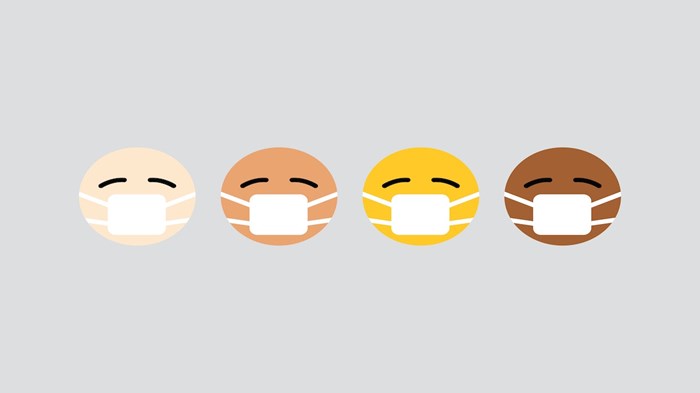Safety Precautions for COVID-19

I am being asked about churches gathering. Evidently some pastors are on the point of defying the government’s guidelines.
Stay with the science.
Read Erin Bromage here. Then read it again.
A Bathroom: Bathrooms have a lot of high touch surfaces, door handles, faucets, stall doors. So fomite transfer risk in this environment can be high. We still do not know whether a person releases infectious material in feces or just fragmented virus, but we do know that toilet flushing does aerosolize many droplets. Treat public bathrooms with extra caution (surface and air), until we know more about the risk.
A Cough: A single cough releases about 3,000 droplets and droplets travels at 50 miles per hour. Most droplets are large, and fall quickly (gravity), but many do stay in the air and can travel across a room in a few seconds.
A Sneeze: A single sneeze releases about 30,000 droplets, with droplets traveling at up to 200 miles per hour. Most droplets are small and travel great distances (easily across a room).
If a person is infected, the droplets in a single cough or sneeze may contain as many as 200,000,000 (two hundred million) virus particles which can all be dispersed into the environment around them.
A breath: A single breath releases 50 - 5000 droplets. Most of these droplets are low velocity and fall to the ground quickly. There are even fewer droplets released through nose-breathing. Importantly, due to the lack of exhalation force with a breath, viral particles from the lower respiratory areas are not expelled.
Unlike sneezing and coughing which release huge amounts of viral material, the respiratory droplets released from breathing only contain low levels of virus. We don't have a number for SARS-CoV2 yet, but we can use influenza as a guide. Studies have shown that a person infected with influenza can releases up to 33 infectious viral particles per minute. But I'm going to use 20 to keep the math simple.
Remember the formula: Successful Infection = Exposure to Virus x Time
If a person coughs or sneezes, those 200,000,000 viral particles go everywhere. Some virus hangs in the air, some falls into surfaces, most falls to the ground. So if you are face-to-face with a person, having a conversation, and that person sneezes or coughs straight at you, it's pretty easy to see how it is possible to inhale 1,000 virus particles and become infected.
But even if that cough or sneeze was not directed at you, some infected droplets--the smallest of small--can hang in the air for a few minutes, filling every corner of a modest sized room with infectious viral particles. All you have to do is enter that room within a few minutes of the cough/sneeze and take a few breaths and you have potentially received enough virus to establish an infection.
But with general breathing, 20 viral particles minute into the environment, even if every virus ended up in your lungs (which is very unlikely), you would need 1000 viral particles divided by 20 per minute = 50 minutes.
Speaking increases the release of respiratory droplets about 10 fold; ~200 virus particles per minute. Again, assuming every virus is inhaled, it would take ~5 minutes of speaking face-to-face to receive the required dose.
The exposure to virus x time formula is the basis of contact tracing. Anyone you spend greater than 10 minutes with in a face-to-face situation is potentially infected. Anyone who shares a space with you (say an office) for an extended period is potentially infected. This is also why it is critical for people who are symptomatic to stay home. Your sneezes and your coughs expel so much virus that you can infect a whole room of people.
The fundamental principle is “proximity to a person with the virus x times spent with that person.” That is, if you are near someone for an hour you are more susceptible than if you walk by such a person.
When it comes to church gatherings, this is for me decisive: those in the “sanctuary” will be breathing, perhaps singing, perhaps praying aloud, perhaps talking … and the longer such persons are with one another the more particles will be formed in the air and passed around.
Normal speech sprays droplets with contagious coronavirus
The thousands of tiny fluid droplets that we spray during normal conversation are a potentially significant way the new coronavirus spreads from person to person, according to a report on Wednesday in the Proceedings of the National Academy of Sciences of the USA. Using laser light scattering, researchers studied the small droplets that linger in the air after exiting the mouth. Based on earlier research into levels of the virus in oral fluid, they estimate that one minute of loud speaking could generate more than 1,000 virus-containing droplets that would remain airborne for at least eight minutes. "There is a substantial probability that normal speaking causes airborne virus transmission in confined environments," Philip Anfinrud and Adriaan Bax of the National Institutes of Health in Bethesda, Maryland and their coauthors conclude. (bit.ly/3fJIRqp)
Jesus Creed is a part of CT's
Blog Forum. Support the work of CT.
Subscribe and get one year free.
The views of the blogger do not necessarily reflect those of Christianity Today.


















